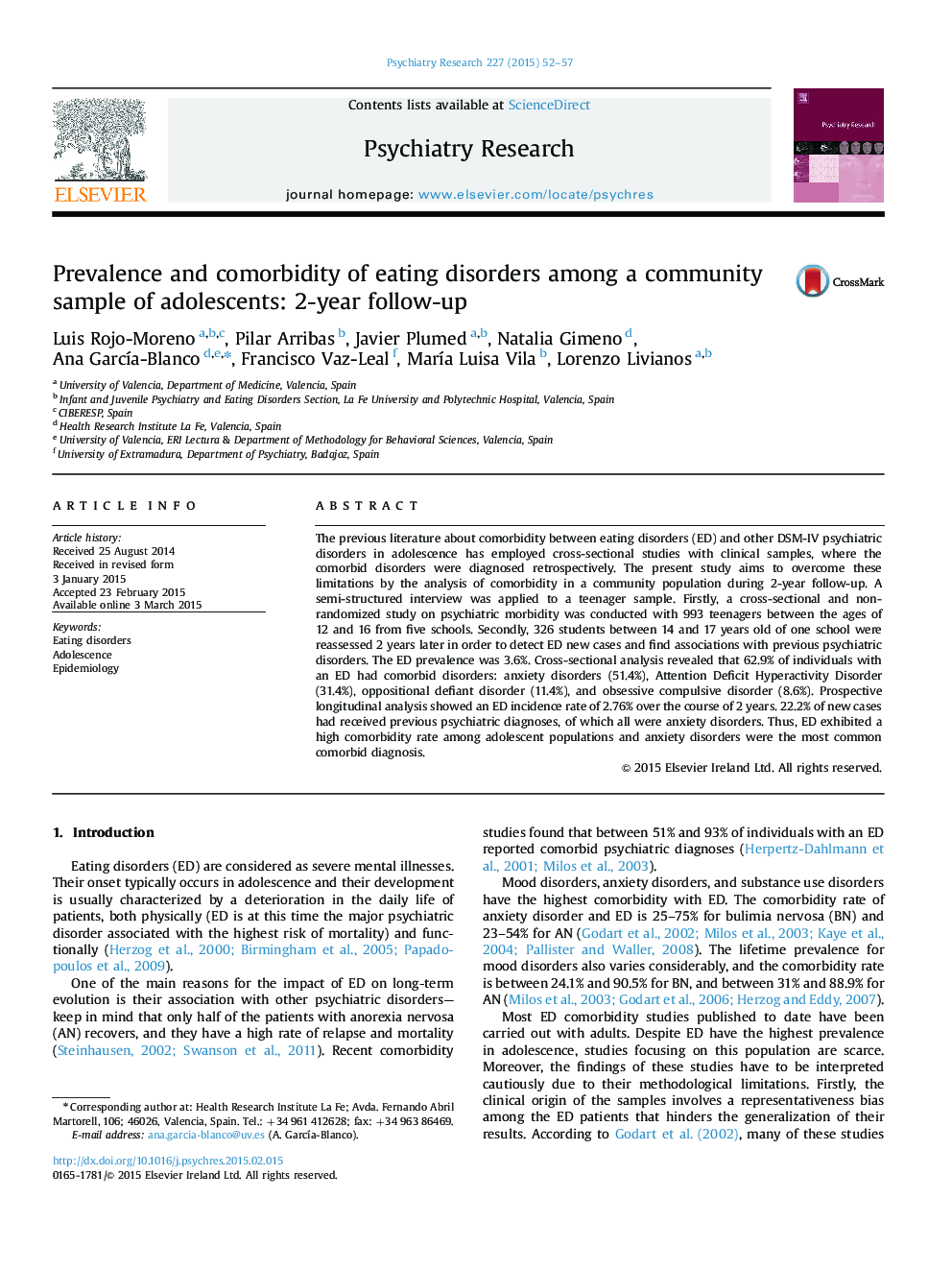| Article ID | Journal | Published Year | Pages | File Type |
|---|---|---|---|---|
| 331906 | Psychiatry Research | 2015 | 6 Pages |
•Most previous psychiatric diagnoses to eating disorders are anxiety disorders.•Eating disorders have a high comorbidity in adolescence.•Anxiety, attention deficit and disruptive behavior disorders are the most comorbid.•This comorbidity is maintained throughout the 2-year follow-up.
The previous literature about comorbidity between eating disorders (ED) and other DSM-IV psychiatric disorders in adolescence has employed cross-sectional studies with clinical samples, where the comorbid disorders were diagnosed retrospectively. The present study aims to overcome these limitations by the analysis of comorbidity in a community population during 2-year follow-up. A semi-structured interview was applied to a teenager sample. Firstly, a cross-sectional and non-randomized study on psychiatric morbidity was conducted with 993 teenagers between the ages of 12 and 16 from five schools. Secondly, 326 students between 14 and 17 years old of one school were reassessed 2 years later in order to detect ED new cases and find associations with previous psychiatric disorders. The ED prevalence was 3.6%. Cross-sectional analysis revealed that 62.9% of individuals with an ED had comorbid disorders: anxiety disorders (51.4%), Attention Deficit Hyperactivity Disorder (31.4%), oppositional defiant disorder (11.4%), and obsessive compulsive disorder (8.6%). Prospective longitudinal analysis showed an ED incidence rate of 2.76% over the course of 2 years. 22.2% of new cases had received previous psychiatric diagnoses, of which all were anxiety disorders. Thus, ED exhibited a high comorbidity rate among adolescent populations and anxiety disorders were the most common comorbid diagnosis.
